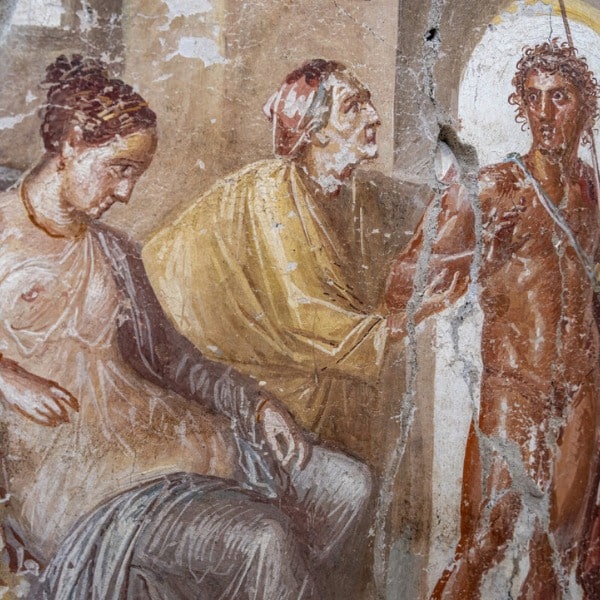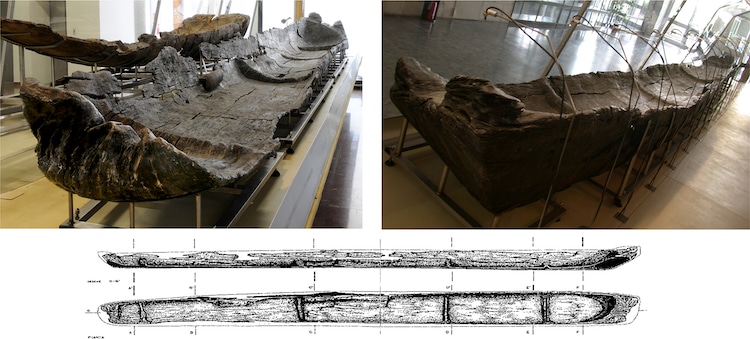
Canoe Marmotta 1 on display in the Museo delle Civiltà in Rome. (Photo: Gibaja et al.)
Have you heard of La Marmotta? It’s ok if you haven’t, as this ancient Italian site has only recently burst onto the international research scene. Discovered in 1989 submerged under a lake north of Rome, the Neolithic village was mostly studied by Italian researchers until recently. Now, an international cohort of academics are shedding new light on life in the ancient town with a paper in PLOS One. By studying and dating the five wooden dugout canoes discovered at the site, the researchers have announced they are the oldest such boats found in this portion of the Mediterranean region.
La Marmotta lies under Lake Bracciano which connects 23 miles of winding rivers to the Mediterranean sea. Countless exceptionally well-preserved remnants of ancient life have been documented since its discovery decades ago. Wooden buildings (some with wooden floors) populate the area. The specific conditions of the water have preserved such organic material from bacteria. Pottery, plants, and basketry have all been discovered. Scattered among the houses were the canoes, created from single tree trunks using fire and manpower. One canoe even had a fascinating wood appendage with drilled holes, indicating how the canoe was used to transport cargo.
The canoes are made of different kinds of wood, suggesting sophisticated ancient seamen chose their materials strategically for different uses and conditions. Two are of alder, one of oak, one of poplar, and one of beech. According to the researchers, “The Quercus [oak] timber is characterized by considerable density and weight. It would provide tough wood and resistant to decay and available in different lengths and diameters. The advantage of Quercus is the presence of tyloses within the vessels, which lessen the permeability of its wood. … The lightness of Alnus [alder] wood together with its resistance to splitting and cracking could have been an advantage for its use.”
By sampling tiny bits of each canoe, the team used radiocarbon dating to estimate the age of the canoes. They turned out to be the oldest known Neolithic boats. Their ages date back to about between 5700 and 5100 BCE, meaning the canoes are over 7,000 years old. At this time, Neolithic humans were settling internal Italy, using canoes for trade and transport. They may likely have been rigged with sails and other advanced nautical gear like outriggers, depending on the canoe and its use.
These boats also demonstrate the impressive long-term trade of the region. Scientists using a similar canoe in the 1990s traveled 500 miles, so the horizon was the limit for a motivated Neolithic sailor. “This technical complexity must be linked to social organisation in which some specialists were dedicated to particular tasks,” the team wrote. They conclude, “In this way, La Marmotta is causing a literal sea change in our view of those first Neolithic farming groups.”
Five ancient canoes found under a lake north of Rome are the oldest Neolithic examples discovered in the Mediterranean.
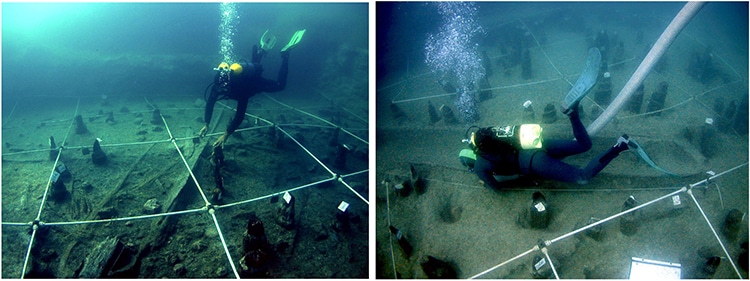
Excavating Canoe 5. (Photo: Gibaja et al.)
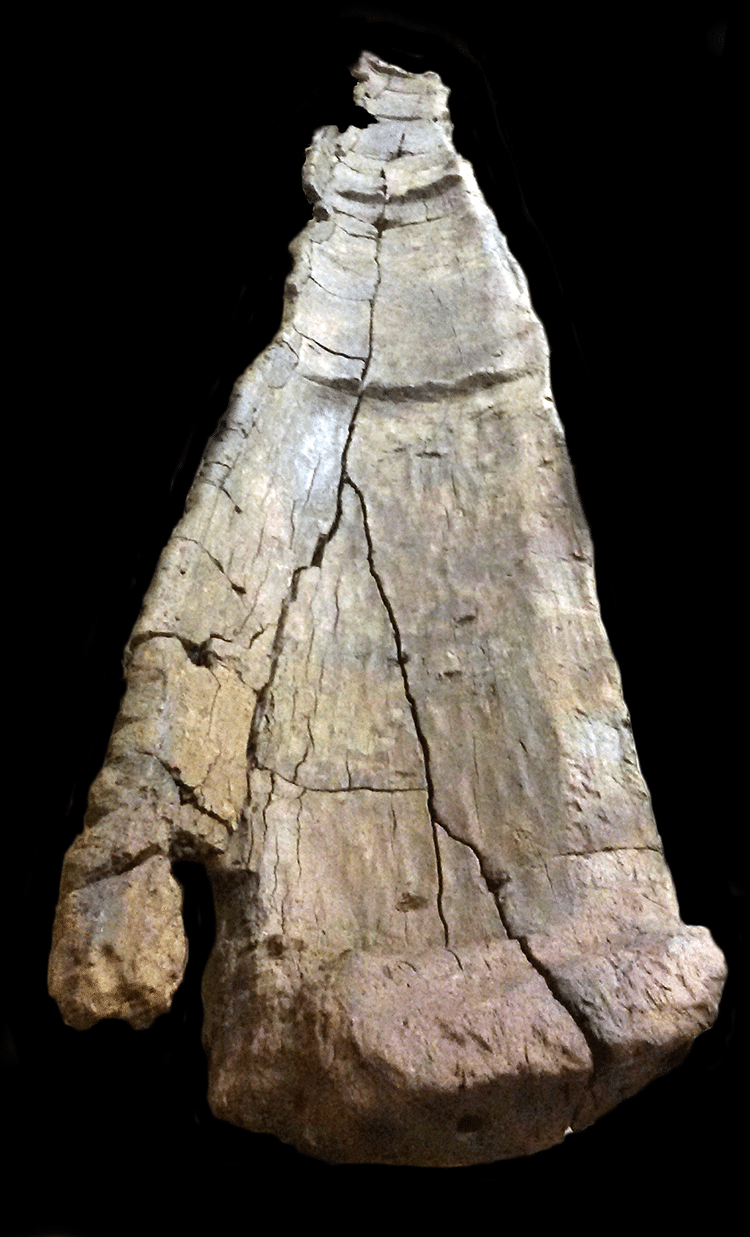
Canoe 3. (Photo: Gibaja et al.)
Well-preserved and well-crafted, these boats are re-writing nautical history.
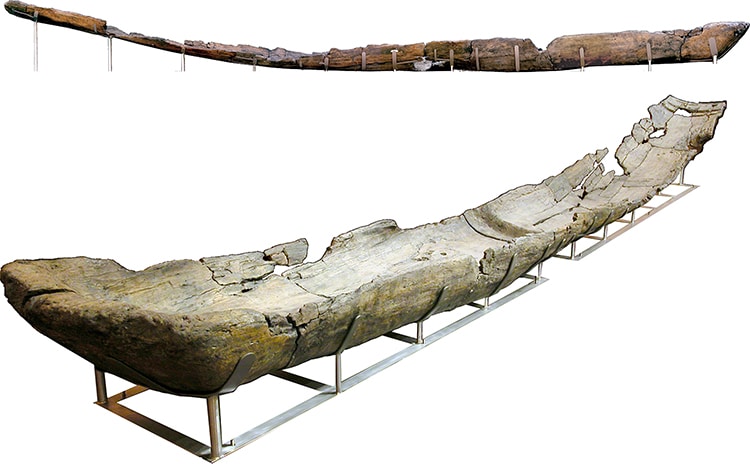
Canoe 2. (Photo: Gibaja et al.)
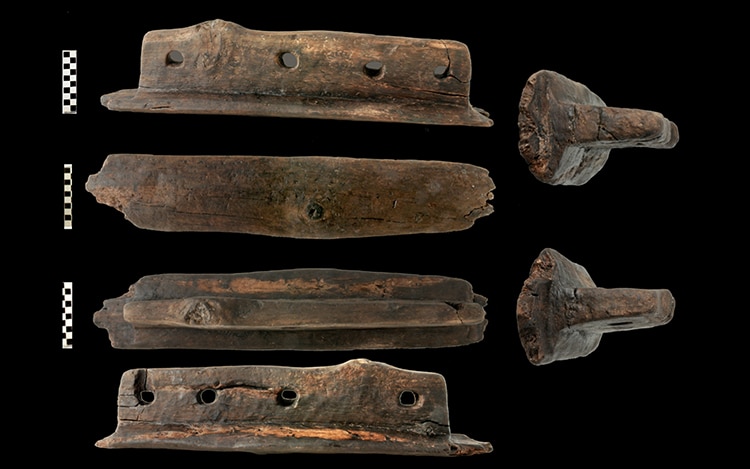
A piece of Canoe 1's construction. (Photo: Gibaja et al.)
h/t: [Smithsonian Magazine]
Related Articles:
Researchers Discover Bronze Age Treasure Made of Meteorite
700-Year-Old Coin Discovered Depicting Jesus Christ Next to a King
16-Million-Year-Old Skull of Extinct Species of Giant Dolphin Discovered in Peru
Vatican Museums Open Ancient Roman Necropolis of ‘Via Triumphalis’ to the Public

















































































